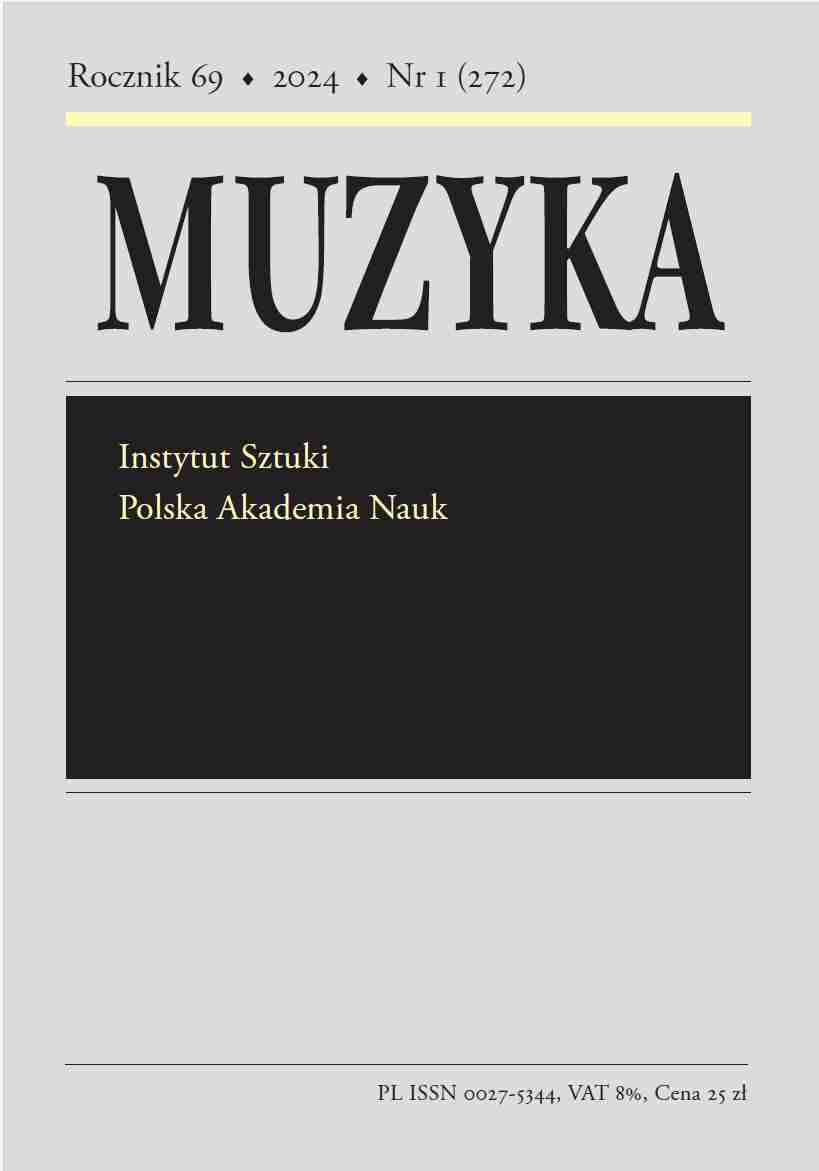Josquin’s Motet “In amara crucis ara” in the Green Codex of Viadrina
Abstract
Manuscript I F 428, located at Wrocław University Library, commonly called The Green Codex of Viadrina, probably copied during the second decade of the sixteenth century, contains complete Mass cycles, single Mass movements, settings of the Magnificat, hymns, motets, and other settings of German texts. Not all of the compositions are attributed, but Martin Staehelin has identified the authorship of many works. Besides the works of such masters of polyphony as Brumel, Compère, Isaac, Senfl, Adam of Fulda, La Rue and Obrecht, the codex contains a tiny motet by Josquin des Prez: In amara crucis ara (fols. 224’–225). This piece is in fact the fourth part of the motet cycle Qui velatus facie fuisti (Officium de passione), published by Petrucci in 1503, from the second motet book titled Motetti de Passione, de Cruce, de Sacramento, de Beata Virgine et huiusmodi B. In MS I F 428, Josquin’s motet was written down after two groups of settings: Officium de Cruce (In nomine Jesu omne genu flectatur caelestium) by Loyset Compère and a polyphonic setting of the Improperia. Some characteristics suggest that these compositions – the two groups of settings plus Josquin’s motet – may have been placed here together because they were considered mutually complementary, all having Good Friday as their subject. In addition, this source fragment is preceded by two blank leaves indicating deliberate separation from the rest of the manuscript, and all the compositions – including Josquin’s motet – are linked by a distinctive ornament attached to the initial letters of the part’s name. Analysis shows that the motet’s text (its symbolic meaning) was probably the main reason why it – and not another part of the cycle Qui velatus facie fuisti – was selected and copied into the codex I F 428. According to the order described earlier, the Improperia are followed by Holy Communion, preceded by a procession of the Holy Sacrament to the altar. In this context, the motet’s words may be read not only symbolically, but also in the literal meaning. It can be assumed that the motet may have been sung during the procession while the hosts were brought to the main altar or while the congregation received the communion.
Statistics
Abstract views: 251PDF downloads: 109
License
Copyright (c) 2024 Wojciech Odoj

This work is licensed under a Creative Commons Attribution 4.0 International License.
The author grants the publisher a royalty-free nonexclusive licence (CC BY 4.0) to use the article in Muzyka, retains full copyright, and agrees to identify the work as first having been published in "Muzyka" should it be published or used again (download licence agreement). By submitting an article the author agrees to make it available under CC BY 4.0 license.
Articles from 2018/1 to 2022/3 were published under a Creative Commons license CC BY-NC-ND 4.0. During this period the authors granted the publisher a royalty-free nonexclusive license (CC BY-ND 4.0) to use their article in "Muzyka", retained full copyright, and agreed to identify the work as first having been published in our journal should it be published or used again.
Most read articles by the same author(s)
- Wojciech Odoj, Florence, Pope Clement VII and Emperor Charles V. A contextual study of the motet ‘Dominator caelorum’ by Jean Conseil / Costanzo Festa (?) , Muzyka: Vol. 64 No. 3 (2019)
- Wojciech Odoj, Teodoro Riccio’s Conundrum of 'Missa Ludovicus Dux Wirtenbergensis' Resolved? , Muzyka: Vol. 68 No. 3 (2023)
- Wojciech Odoj, Costanzo Festa’s (?) motet ‘O altitudo divitiarum’ re-examined: new suggestions regarding its source context, attribution and function , Muzyka: Vol. 62 No. 3 (2017)










